Grow Pineapples at Home
Have you ever dreamt of biting into a juicy, sun-ripened pineapple you grew yourself? It might sound exotic, but growing pineapples at home is surprisingly achievable! This isn’t just some far-fetched fantasy; with a little know-how and these simple DIY tricks, you can enjoy the sweet taste of success (and delicious fruit) right in your own backyard or even on your windowsill. I’ve always been fascinated by the history of pineapples – their journey from a tropical delicacy enjoyed by royalty to a readily available fruit in supermarkets is quite remarkable. Historically, pineapples were a symbol of wealth and hospitality, and now, thanks to these grow pineapples at home techniques, you can bring a touch of that regal history into your own life.
Why bother with the effort? Well, aside from the undeniable satisfaction of nurturing a plant from crown to fruit, homegrown pineapples boast an unparalleled flavor. Store-bought pineapples, while convenient, often lack the vibrant sweetness and intense aroma of a freshly harvested pineapple. Plus, there’s something incredibly rewarding about knowing exactly where your food comes from and how it was grown. This guide will walk you through everything you need to know, from selecting the perfect pineapple crown to mastering the art of soil preparation and ensuring your pineapple plant thrives. So, let’s dive in and discover the secrets to successfully grow pineapples at home!
Ready to embark on this exciting gardening adventure? Let’s get started!
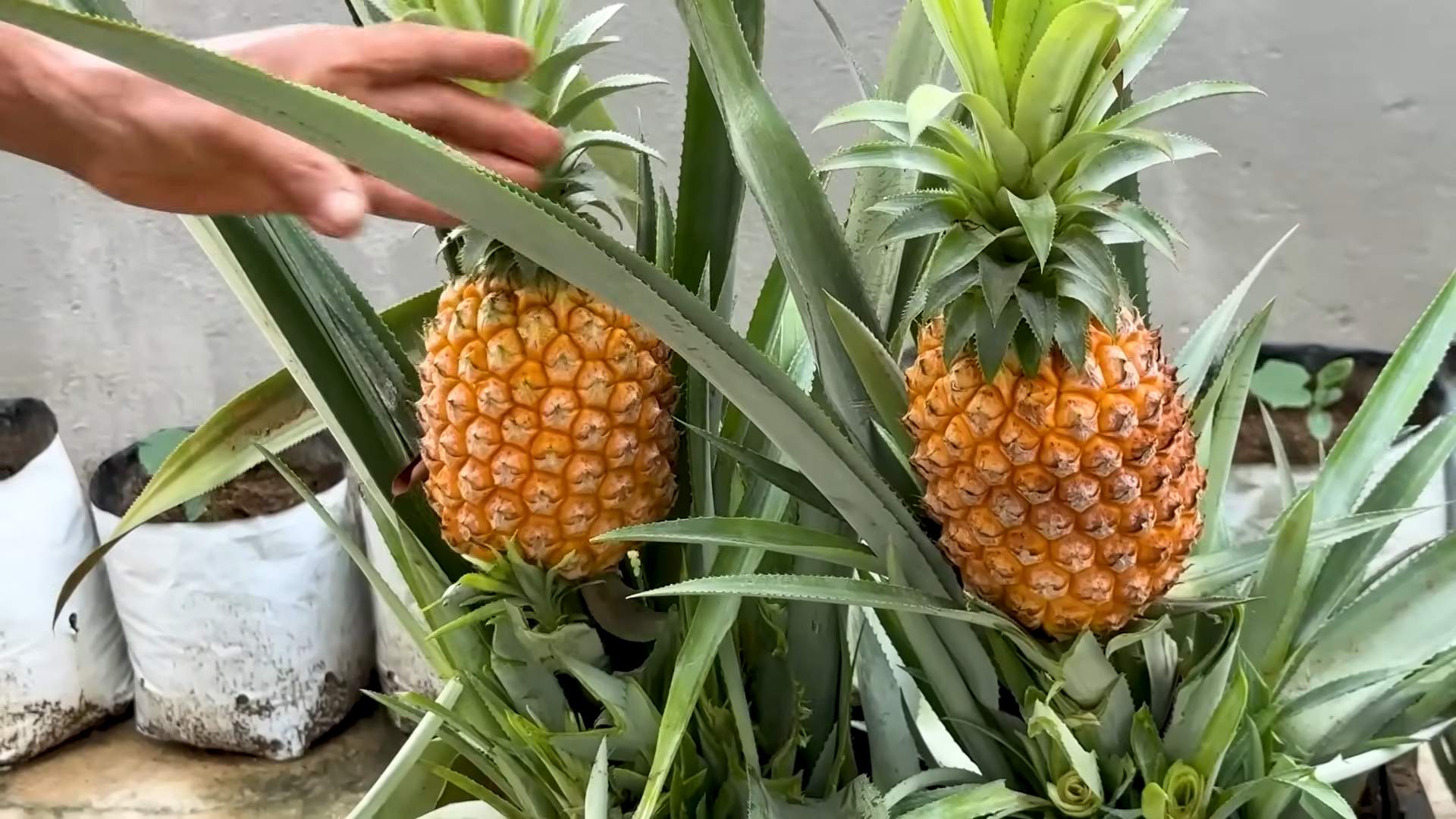
Growing Pineapples at Home: A Step-by-Step Guide
Growing a pineapple at home might sound challenging, but with patience and the right approach, it’s totally achievable! I’ve done it myself, and I’m here to guide you through the process. This isn’t a quick project; it takes time, but the reward of harvesting your own sweet pineapple is well worth the effort.
Choosing and Preparing Your Pineapple Top
- Select a ripe pineapple: This is crucial. Look for a pineapple that’s fragrant, heavy for its size, and has a vibrant green crown. Avoid pineapples that are bruised or show signs of rot.
- Cut off the crown: Using a sharp knife, carefully cut the crown from the pineapple, leaving about 1-2 inches of the fruit attached to the base of the leaves. This provides a good area for root development.
- Remove lower leaves: Gently remove the lower leaves until you expose about 1-2 inches of the stem. This will allow the stem to be submerged in water during the rooting process. Be careful not to damage the stem itself.
- Clean the crown: Rinse the crown thoroughly under cool water to remove any remaining fruit pulp or debris. This prevents rot and encourages healthy root growth.
Rooting the Pineapple Top
- Air dry the crown: Let the crown air dry for a few days in a well-ventilated area. This allows the cut end to callous over, preventing rot during the rooting process. This step is important!
- Prepare the rooting medium: You have a few options here. You can use a glass of water, a small pot with well-draining potting mix, or even a mixture of perlite and peat moss. I prefer a glass of water initially, as it allows for easy monitoring of root development.
- Submerge the stem: Place the crown in your chosen rooting medium, ensuring that only the stem is submerged. If using water, change the water every 2-3 days to prevent bacterial growth. If using soil, keep it consistently moist but not waterlogged.
- Provide warmth and light: Place the crown in a warm, bright location, but avoid direct sunlight, which can scorch the leaves. An east-facing windowsill is ideal.
- Monitor for root development: This can take anywhere from 4 to 8 weeks, sometimes even longer. Patiently check for root growth. If using water, you should see small roots emerging from the base of the stem. If using soil, gently tug on the crown after a few weeks – if it offers resistance, roots are likely forming.
Planting Your Rooted Pineapple
- Choose a pot: Select a pot that’s slightly larger than the root ball of your pineapple. Ensure it has drainage holes to prevent waterlogging.
- Prepare the potting mix: Use a well-draining potting mix specifically designed for tropical plants. A mix of potting soil, perlite, and peat moss works well. Avoid heavy clay soils.
- Plant the pineapple: Gently plant the rooted pineapple crown in the prepared potting mix, ensuring the base of the stem is just below the soil surface. Don’t bury it too deep.
- Water thoroughly: Water the pineapple thoroughly after planting, ensuring the soil is evenly moist. Avoid overwatering, which can lead to root rot.
- Provide optimal conditions: Place the potted pineapple in a warm, bright location, ideally with indirect sunlight. Maintain a consistently moist but not soggy soil.
Ongoing Care and Maintenance
- Watering: Water regularly, allowing the top inch of soil to dry out slightly between waterings. Adjust watering frequency based on the climate and season. During hotter months, you may need to water more frequently.
- Fertilizing: Fertilize your pineapple every 2-4 weeks during the growing season (spring and summer) using a balanced liquid fertilizer diluted to half strength. Reduce fertilization during the winter months.
- Pest and disease control: Regularly inspect your pineapple for pests and diseases. Address any issues promptly using appropriate organic pest control methods.
- Patience is key: Remember, pineapples are slow-growing plants. It can take 2-3 years, or even longer, for your pineapple to mature and produce fruit. Be patient and enjoy the journey!
- Sunlight: This is crucial. Pineapples need at least 6-8 hours of sunlight per day. If you don’t have enough natural sunlight, consider using grow lights to supplement.
- Humidity: Pineapples thrive in humid environments. If your climate is dry, consider increasing humidity around your plant by grouping it with other plants or using a humidifier.
- Temperature: Maintain a consistent temperature between 70-80°F (21-27°C). Avoid exposing your pineapple to temperatures below 50°F (10°C).
- Repotting: As your pineapple grows, you may need to repot it into a larger container. Do this in the spring or early summer.
Harvesting Your Pineapple
Once your pineapple is mature, the fruit will turn a yellowish-brown color and the leaves will start to droop slightly. You can gently tug on the fruit to check for ripeness. If it comes off easily, it’s ready to harvest. Enjoy the fruits of your labor!
Troubleshooting
If you encounter problems like yellowing leaves, stunted growth, or pest infestations, research the specific issue and take appropriate action. Many online resources and gardening forums can provide valuable assistance.
Remember to always research specific solutions for any problems you encounter with your pineapple plant.
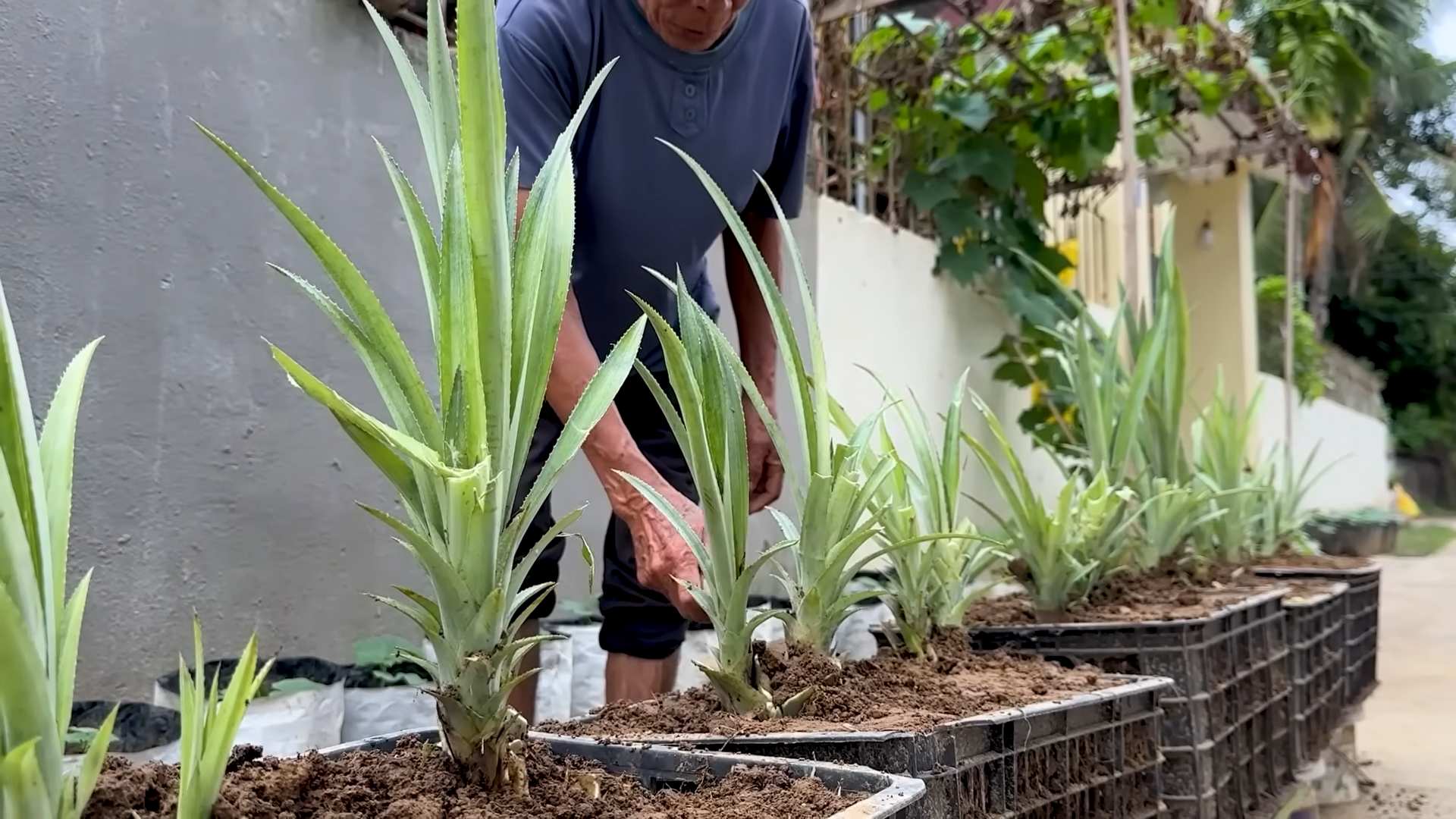
Conclusion
Growing pineapples at home might seem daunting, but this DIY method proves it’s surprisingly achievable and incredibly rewarding. You’ll not only save money on grocery bills but also experience the immense satisfaction of nurturing a plant from crown to fruit. This unique approach to home gardening offers a fascinating glimpse into the life cycle of this tropical fruit, transforming a simple kitchen experiment into a captivating journey of growth and discovery. The ease of propagation, coupled with the minimal resources required, makes this DIY pineapple growing project a must-try for both seasoned gardeners and enthusiastic beginners alike. Imagine the pride of harvesting your own sweet, juicy pineapple, knowing you cultivated it from a simple crown – it’s an experience unlike any other. This method allows you to bypass the complexities of traditional pineapple cultivation, offering a simplified and accessible route to enjoying fresh, homegrown pineapples.
Beyond the core method, there are several exciting avenues to explore. Experiment with different types of containers – terracotta pots offer excellent drainage, while larger containers provide more space for root development. You can also try different soil mixes, incorporating elements like perlite or vermiculite to improve drainage and aeration. Consider the placement of your pineapple plant; a sunny spot is ideal, but you might need to adjust based on your climate and the intensity of the sunlight. For those with limited space, consider growing your pineapple in a vertical garden or even a hydroponic system. The possibilities are truly endless, allowing you to tailor the growing process to your specific needs and environment. Don’t be afraid to get creative and experiment – each attempt will bring you closer to mastering the art of homegrown pineapples.
We strongly encourage you to embark on this exciting adventure of growing pineapples at home. Share your experiences, successes, and even your challenges with us and the wider gardening community. Post pictures of your thriving pineapple plants on social media using #GrowPineapplesAtHome and inspire others to join the fun. Your journey will not only result in delicious, homegrown pineapples but also contribute to a growing network of passionate home gardeners sharing their knowledge and enthusiasm. Remember, the most important ingredient is patience and a touch of green thumb magic. So, grab that pineapple crown, follow our simple steps, and get ready to experience the joy of growing your own tropical paradise!
Frequently Asked Questions
Can I use any type of pineapple crown for propagation?
While you can use crowns from most pineapples, selecting a crown from a ripe, healthy pineapple significantly increases your chances of success. Look for a crown that is firm, free from blemishes, and has healthy, vibrant green leaves. Avoid crowns from pineapples that show signs of disease or damage. The healthier the crown, the better its chances of rooting and producing a new plant.
How long does it take for a pineapple crown to produce fruit?
The time it takes for a pineapple crown to produce fruit can vary depending on several factors, including the variety of pineapple, growing conditions, and overall plant health. Generally, it can take anywhere from 18 months to 3 years for a pineapple plant grown from a crown to produce its first fruit. Patience is key! Providing optimal growing conditions, such as ample sunlight, well-draining soil, and consistent watering, will help to speed up the process.
What should I do if my pineapple crown doesn’t root?
If your pineapple crown doesn’t root after several weeks, don’t be discouraged. There are several reasons why this might happen, including improper care, poor soil conditions, or a damaged crown. Check the soil moisture levels – ensure it’s consistently moist but not waterlogged. Make sure the crown is receiving adequate sunlight. If the crown shows signs of rot or decay, it’s likely beyond saving. Try again with a fresh, healthy crown, paying close attention to the steps outlined in the article. Remember, even experienced gardeners experience setbacks sometimes.
What kind of soil is best for growing pineapples?
Pineapples thrive in well-draining soil that is slightly acidic. A good soil mix would consist of a combination of potting soil, perlite, and vermiculite. Perlite and vermiculite improve drainage and aeration, preventing the soil from becoming waterlogged, which can lead to root rot. You can also add a small amount of organic matter, such as compost, to enrich the soil. Avoid using heavy clay soils, as they retain too much moisture and can suffocate the roots. Regularly checking the soil moisture is crucial to ensure the plant receives the right amount of water without becoming waterlogged.
Can I grow pineapples indoors?
Yes, you can successfully grow pineapples indoors, provided you can provide them with sufficient sunlight. A sunny windowsill or a location with supplemental grow lights is ideal. Monitor the plant closely for signs of stress, such as yellowing leaves or stunted growth, and adjust your care accordingly. Indoor growing might require more attention to watering and humidity levels compared to outdoor cultivation. Consider using a humidity tray to increase humidity around the plant, especially during dry periods. Indoor pineapple growing offers a rewarding experience, bringing a touch of the tropics into your home.
What are the signs of a healthy pineapple plant?
A healthy pineapple plant will exhibit vibrant green leaves that are firm and upright. The leaves should be free from blemishes, pests, or diseases. The plant should show consistent growth, with new leaves emerging regularly. The soil should be consistently moist but not waterlogged. If you notice any signs of stress, such as yellowing leaves, wilting, or stunted growth, address the underlying issue promptly to prevent further damage. Regularly inspecting your plant for any signs of pests or diseases is crucial for maintaining its health and ensuring a successful harvest. A healthy plant is more likely to produce a high-quality, delicious pineapple.

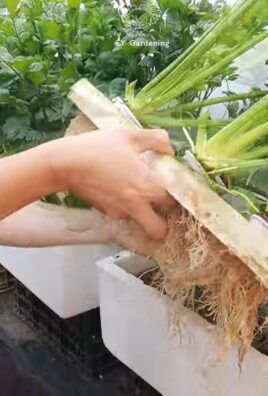
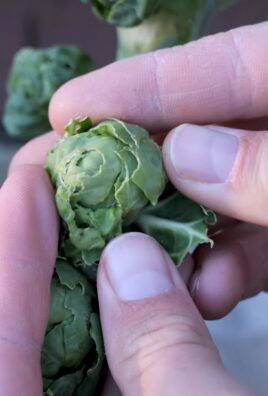
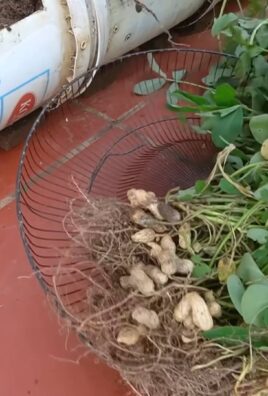
Leave a Comment